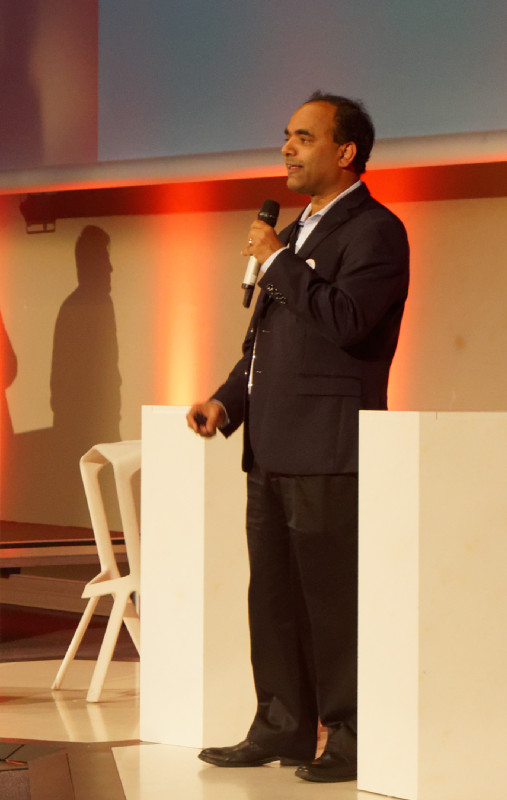Rajesh Pankesh is head of R&D at Qualcomm, which makes more than 800 million chips per year as the largest fabless chip company. He gave the first of the end of day keynotes.
What is 4G and 5G, Pankesh asked? For 4G there is now enough bandwidth to develop video download services. However, for 5G, a lot of things were added to the existing 4G architecture, including carrier aggregation and the use of unlicensed spectrum. These complicated matters if they were ‘simply’ added to 4G, so the decision was made to ‘start again’. Now, 5G should be able to deliver multi-gigabit speeds but also with low latency. There is also a mode that can deliver mission-critical reliability. (If this mode really is hyper-reliable, it might be the key enabler of tele-medicine. At the moment, we have heard, tele-medicine has a huge potential, but is, effectively, frozen by the fear of the loss of connections – Man. Ed)
 Rajesh Pankesh highlighted the changes in 5G. Image:Meko
Rajesh Pankesh highlighted the changes in 5G. Image:Meko
Smartphones have become the standard starting computing platform in much of the world and so connectivity and computing are both important. You also need to be able to do quite a lot of computing locally as well as in the cloud to support what users want. Pankesh said that, so far, Qualcomm has spent around $46 billion in cumulative R&D.
Turning to the Qualcomm business model, the money comes from the ecosystem, he said. In fact, Qualcomm brings technology in every area of the wireless ecosystem, he claimed, not just handsets. This has been a long term method of working and remains the strategy.
Now, Qualcomm is going beyond smartphones to wearables, smart cities and other areas. What is common to them is that they have to have low power operation, as smartphones have.

